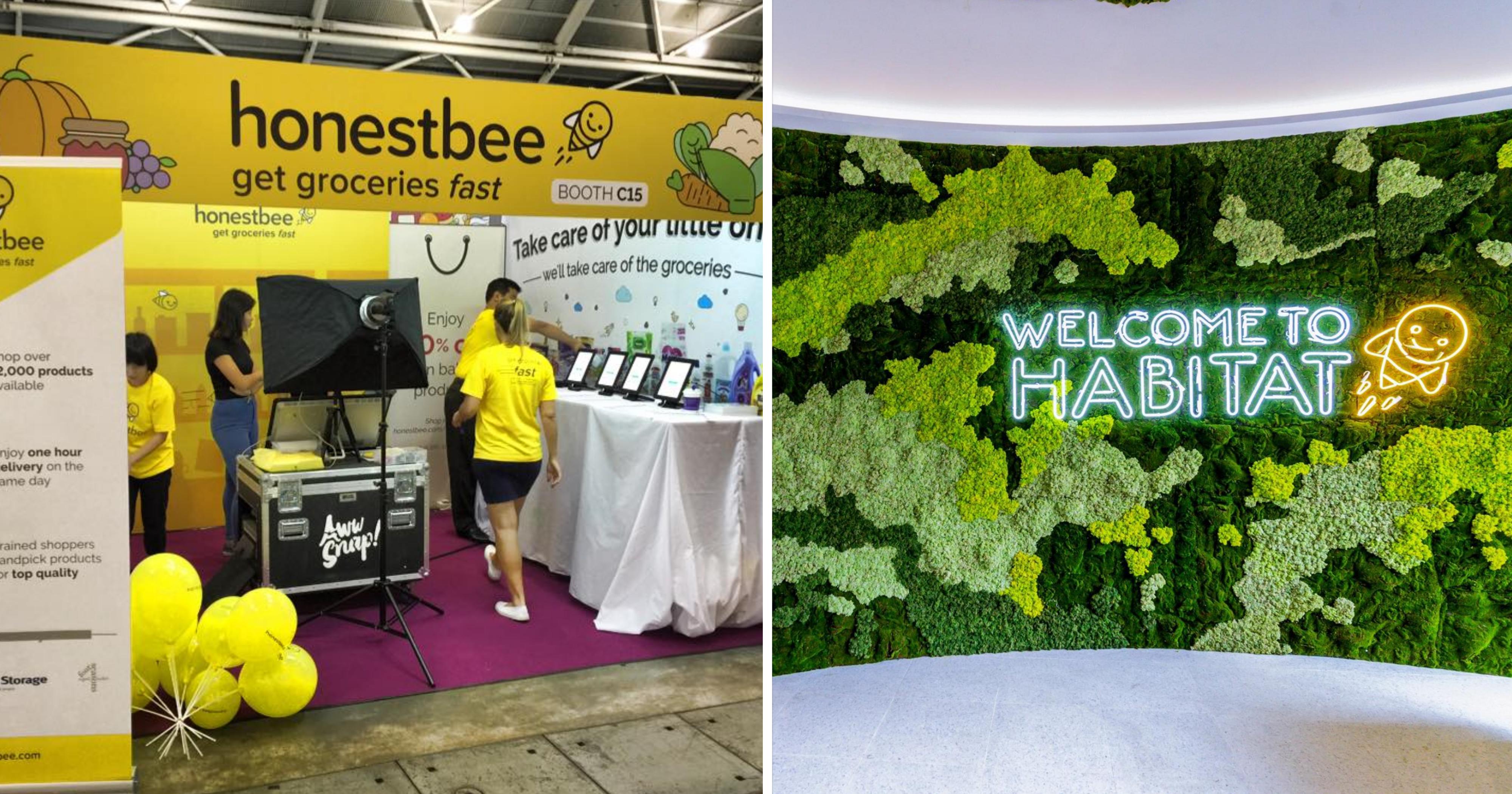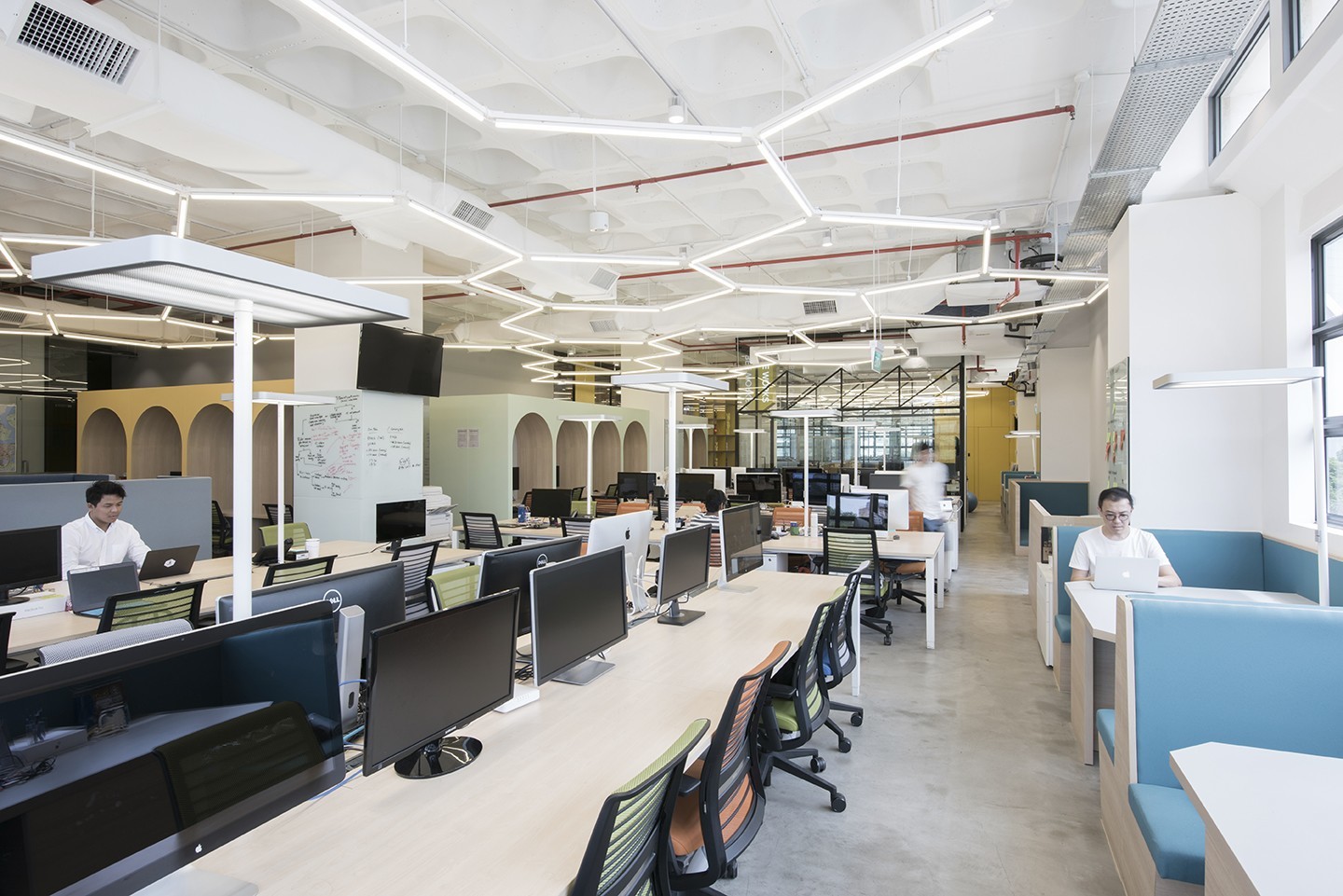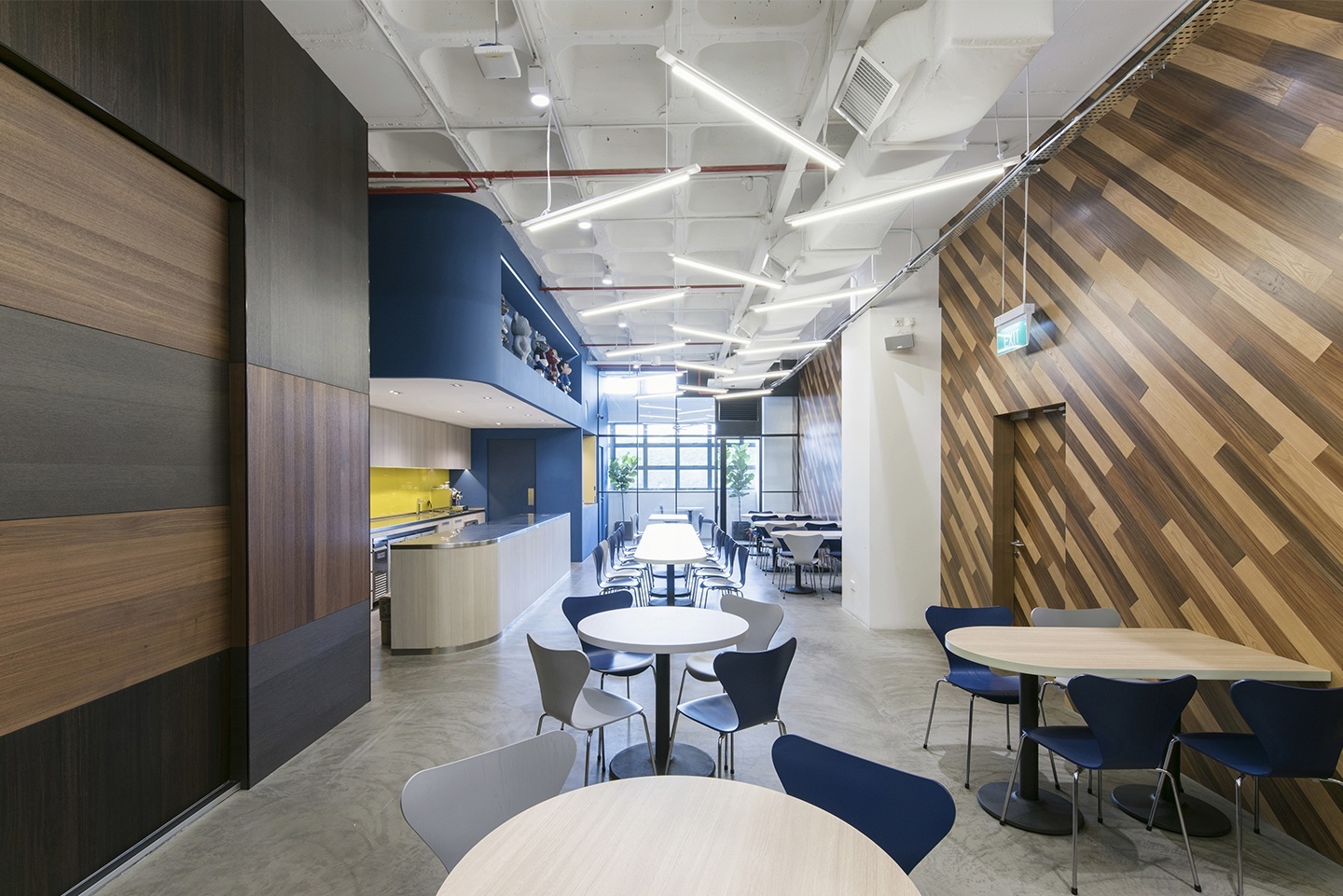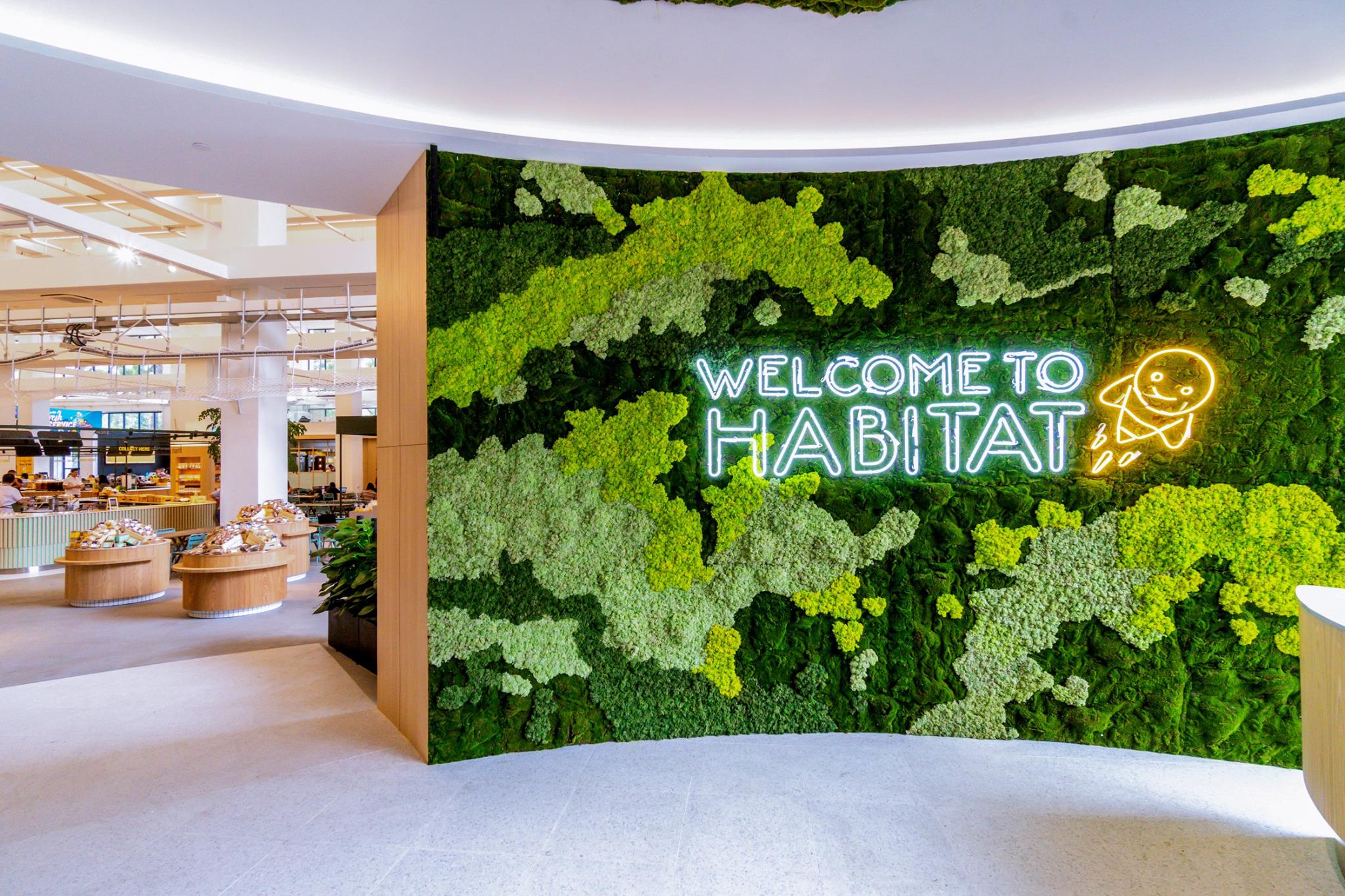Back when buying groceries online was first becoming commonplace, there was this brief period of time the phrase "online grocery war" was considered only slightly hyperbolic.
There were quite a few entrants to this "war" by 2015.
A familiar name, such as RedMart, was one of the first movers in this space.
A new competitor, however, made quite a buzz when it entered the scene.
Honestbee
Honestbee was started by three Singaporeans: Joel Sng, Isaac Tay, and Jonathan Low.
That was a unique selling point that the brand latched on to well.
Their spokesperson had this to say on July, 2015:
"Started by Singaporeans for Singaporeans, we want people to know that Honestbee is committed to creating jobs."
The first few months of operations saw a mind boggling level of growth.
They went from startup in a cramped 1,500 sq ft shophouse in Little India, to having a presence in four countries (Singapore, Japan, Hong Kong, and Taipei) all within six months.
They were hiring 1,200 part-time workers, and had moved into a swanky new 15,000 sq ft office.
Swee.
They are currently operating out of Delta House at Alexandra Road.
So, how were they expanding so fast?
Here's how.
First you got to find a niche for your start-up.
Honestbee thought it had it because of the different markets they were targeting, compared to more established competitors like RedMart.
Here's how TechCrunch described that edge, as explained by head of marketing Shane Chiang:
"Chiang says Honestbee’s advantage is that it appeals to customers who want certain products from their favourite stores that RedMart might not carry, as well as lower minimum orders for delivery fees."
The other stark difference between RedMart and Honestbee is how they carry out their business model.
While RedMart has their own warehouse and logistics system, Honestbee partners with existing brick-and-mortar shops.
Which means that it is way easier for Honestbee to expand to different countries, because it's more of a partnership rather than setting up an entirely new foundation from which to build a business.
Take note of this, it comes back into play later.
All those factors do play a role in explaining their meteoric rise in little more than half a year, but all the advantages in the world mean little without some form of capital.
Enter the capital
Like most tech start-ups, Honestbee found loads of people willing to take a flyer on the up-and-coming tech startup.
They managed to raise US$15 million (S$20 million) in a Series A round.
The round was led by Silicon Valley investment firm, Formation 8.
If you find that name familiar, one of the co-founders of Formation 8 is Brian Koo, who is the newly minted CEO of Honestbee after Sng resigned.
Sng was also partner of Formation 8.
But back to the point at hand.
The US$15 million round gave them the capital needed to expand their business, and hire the people needed to continue expanding their business.
Riding high
And for a while, Honestbee was on a really hot streak.
Sure, there were some marketing snafus here and there.
They tried to set up an "exotic meat store" on April Fools' day 2016, but it was more or less smooth sailing.
By the time they were two in 2017, they had firmly established themselves as one of the, if not the, "largest and fastest" e-commerce service in Asia.
They were now in Singapore, Kuala Lumpur, Manila, Taipei, Tokyo, and Bangkok.
The number of countries wasn't the only metric which they appeared to be focusing on either.
In 2017, Honestbee started a food delivery service as well, which followed on the heels of their on-demand laundry service.
By then they had around 300 full-time staff and 12,500 delivery drivers and shoppers partners.
In the ultimate sign of e-commerce kid made good, the tech start-up actually began developing a brick-and-mortar presence.
In October 2018, the 60,000 sq ft Habitat by Honestbee opened to rave reviews.
That has been, by all measures, an incredible success.
It was one of the top 10 trending search results in Singapore in 2018, and Habitat welcomed nearly 500,000 customers eagerly perusing their 20,000 and more products.
It was such a success that Sng had revealed his plans to open even more brick-and-mortar outlets in other countries.
The brick-and-mortar project was expected to start in 2019.
A Nikkei article on December 2018 had this to say about Honestbee's future plans:
"The company aims to open shops in markets where it already operates delivery services. Initially, Honestbee is looking at three sites in three markets outside Singapore, including Japan, Sng said."
But as you might have already known, they have encountered some hiccups recently.
Strategic review
As of this article, Honestbee has ceased their operations in Hong Kong and Indonesia.
It has also temporarily suspended operations in the Philippines.
That means it is now only in these countries: Singapore, Malaysia, Taiwan, and Thailand (food delivery has been suspended in Thailand).
It also "temporarily suspended" its partnership with NTUC FairPrice, and one of the co-founders left the company.
TechCrunch recently reported that Honestbee was running out of money, attributing it to a "business model with tight margins that's largely unproven in Asia Pacific".
TechCrunch further expounded on the internal numbers for Honestbee in December 2018.
“Internal numbers for Honestbee in December 2018, seen by TechCrunch, show that it lost nearly $6.5 million, with around $2.5 million in net revenue for the month.”
This intensive financial drain wasn't wholly unexpected though.
In fact all the way back in 2015, before Honestbee's meteoric rise, RedMart's then CEO Roger Egan told TechinAsia some potential problems he foresaw with the on-demand marketplace model Honestbee would come to specialise in.
“We think [the on-demand marketplace] works for certain product categories but I don’t think it scales for groceries,” he told me. “In groceries, you have many more items per order than other ecommerce. So, the efficiency of picking and packing those orders becomes really important at scale.”
So basically, as you grow larger, and the amount of groceries per order goes up, the costs go up as well.
Which all comes back to the initial difference in models that RedMart and Honestbee partook in.
“Picking and packing from a physical store can never be as efficient as a fully automated fulfilment center. It’ll always cost more per pick. It’s good for lowering delivery time and for convenience. But once you have to scale up, it’s not as efficient because physical retail space is more expensive and has less throughput.”
It is, of course, incredibly premature to consider this the end of Honestbee, but it is not too much of a stretch to say that a new direction is sorely needed.
Perhaps that was the message that was sent with the recent management changes, and ongoing strategic review.
Koo, interim CEO of Honestbee, signalled his intentions to "conduct an in-depth review of our business to focus and align our strategic interests across our various geographies and verticals".
And through that, "articulate a clear vision for the future of Honestbee".
Related articles
Image collated from Honestbee
If you like what you read, follow us on Facebook, Instagram, Twitter and Telegram to get the latest updates.



